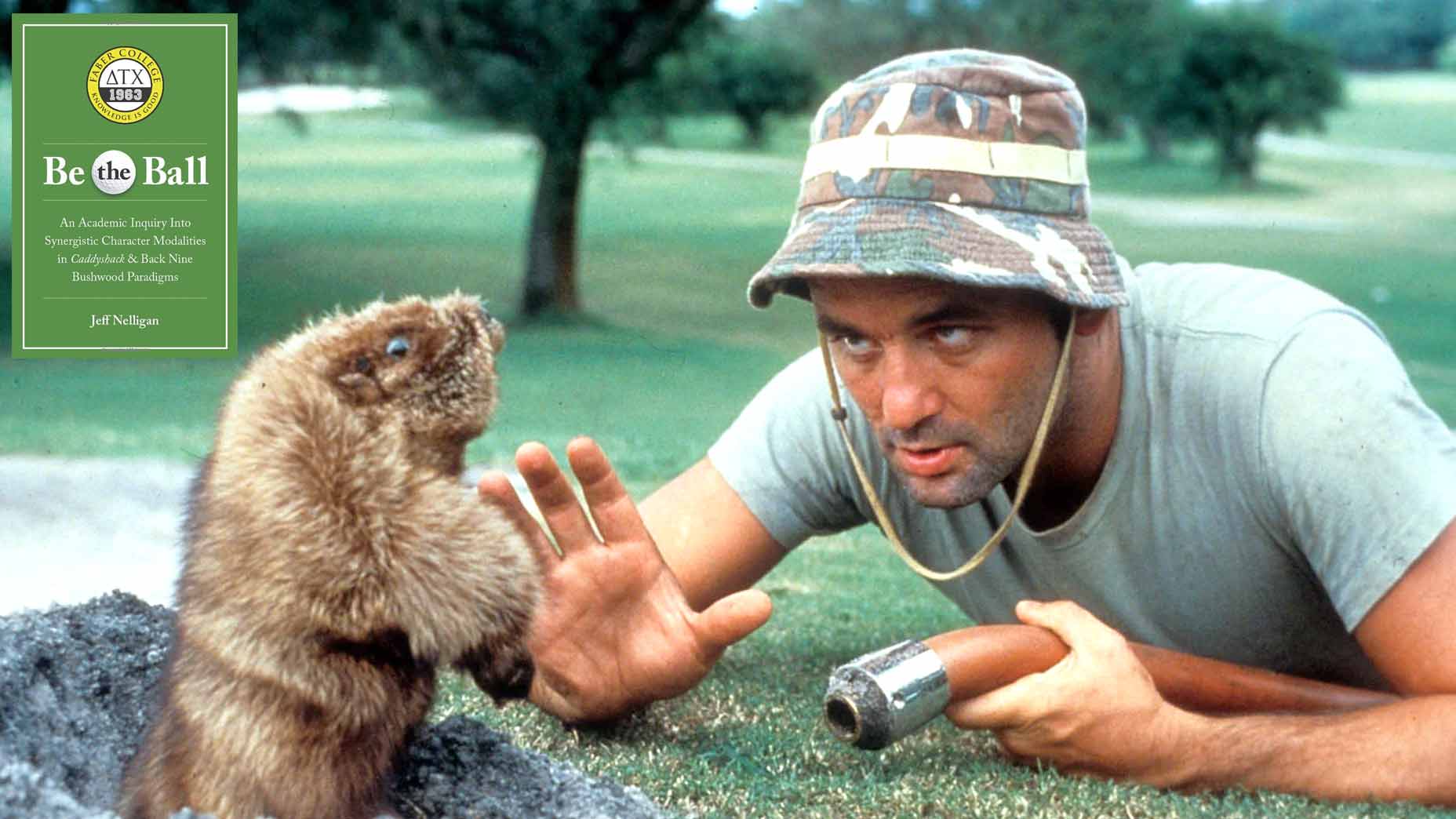In the summer of 1980, Jeff Nelligan, a casual golfer fresh out of college, went to see a new release at his local Cineplex. On the face of it, the film concerned itself with a motley cast of characters at a country club. But on a deeper level, it was also a story about class divides, teen pregnancy, pest control, the perils of candy bars in swimming pools, and the adolescent humor of bodily noises that sound like someone stepping on a duck.
So it had that going for it, along with this: Nelligan liked it. Check that. He loved it.
“I thought it was the greatest movie ever made,” he says today.
Nelligan watched Caddyshack, again and again. He also quoted it, over and over. Its script became his scripture, and he didn’t only cite it when he was on the links. Carl Spackler-isms speckled his everyday exchanges. Al Czervik wisecracks crept into his water-cooler talk.
“I’d use them as ice-breakers,” Nelligan says. “But mostly it was just because I couldn’t help myself.”
The reactions he got proved that he was not alone. People didn’t merely understand his references. They laughed at them, even people who had never swung a club. Many of those non-golfers fired back with Caddyshack riffs of their own.
“It was hard to find a person who wasn’t familiar with the movie,” Nelligan says. “It was amazing how quickly it had become this odd cultural icon.”
In the late 1980s, after a brief career as a newspaper reporter, Nelligan settled in the Washington D.C. area, landing work as a congressional aide on Capitol Hill. George H.W. Bush was in the Oval Office, and the Beltway was in a Bushwood state of mind. In otherwise dry legislative meetings, stone-faced functionaries would slip, out of nowhere, into Ty Webb deadpan. Long-shot political campaigns were hailed as “Cinderella stories.” Senior members of important committees would cap dull presentations by noting, “which is nice!”
In this Caddyshack-mad climate, a thought burrowed, gopher-like, into Nelligan’s brain: he should compose a literary tribute, an enduring totem that would celebrate his years-long ardor for the movie while helping fans relive its most memorable scenes.
Not that he sprang into action on that impulse. Instead, he let the idea gnaw at him for decades. Time wore on.
Nelligan raised three Caddyshack-loving sons into adulthood, juggling fatherhood with a busy career while earning a Georgetown law degree at night. Over that same period, he published two books (one a cheeky self-help treatise for aspiring politicians, the other an account of how he brought up his kids “to be bad-asses”), without spilling an ounce of ink on his favorite film.
Then, one day he woke up and it was 2020. His 61st birthday was approaching ― and the 40th anniversary of Caddyshack. Nelligan realized it was now or never.
“So I sat out on the porch with a case of Red Bull and a pack of Marlboros,” says Nelligan, who currently works in communications for the Food & Drug Administration. “And I knocked that sucker out.”
The result, which Nelligan self-published this fall, is Be the Ball: An Academic Inquiry into Synergistic Character Modalities in Caddyshack & Back Nine Bushwood Paradigms. As its labored subtitle suggests, the book is structured as a doctoral dissertation, and written in tortured academese. Like the faux on-course philosophizing in the movie, the puffed-up prose parodies itself. That it also appears under the imprint of “Faber College” (a nod to Animal House, Nelligan’s second-favorite movie) further underscores the satirical tone.
“Is (Caddyshack) a triumphalist masterpiece, an unequalled cinematic tour de force relying on a sublime mix of drama, pathos and wit that announces a cinematic New Enlightenment?” Nelligan asks in his “abstract,” the Ivory Tower’s version of an introduction. “Or is the film an utterly base form of juvenilia, a retrograde jumble of low-brow one-liners whose popularity presages an irretrievable Western cultural decline.”
Weighty observations. And Nelligan keeps the heavy stuff coming for upwards of 100 pages, larding his language with terms like “metanarrative,” “thematic tautologies” and “hermeneutic feminist marginalization.” Along the way, he recounts Caddyshack’s key plot points and details the movie’s landmark moments while offering cartoonishly pompous insights into the main characters, their motivations and what they represent.
In Nelligan’s depiction, Judge Elihu Smails emerges not only as an arrogant windbag but also as “a quintessential Byronic Anti-Hero.” Al Czervik, for his part, takes shape as something more than a gauche New Money goofball. There is, in fact, “a deeper shallowness” to him, Nelligan informs us, a “Rodent Intersectionality” that transforms Czervik into a metaphor for the film’s destructive buck-tooth varmint: he’s an intruder, bent on ruining the grounds.
Oh, and by the way, Ty Webb is in “a Freudian Oedipal id-ego relationship” with the judge.
Of course, if you give any of this credence, you have missed the point. Be the Ball is a work of intellectual jiu-jitsu that applies the most self-serious of disciplines to a lark of a movie in order to elevate the latter while gently mocking the former. And, according to its author, the whole thing should be read with a grain of salt.
After all these years, Nelligan still seriously loves Caddyshack. “But I hope no one take this book seriously,” he says. “Not one bit.”
Copies of Be the Ball: An Academic Inquiry Into Synergistic Character Modalities in Caddyshack & Back Nine Bushwood Paradigms, can be purchased here. Orders do not come with a free bowl of soup.
